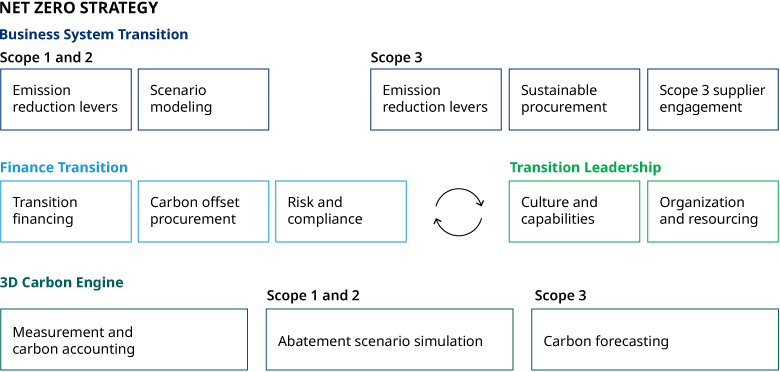Editor’s note: This is the first article in a series on how pharmaceutical companies can achieve their net zero goals.
A sizeable — and influential — number of pharmaceutical companies have set ambitious goals to reduce their carbon footprints. An estimated 46% of pharmaceutical and biotech companies by revenue signed the United Nation’s Race to Zero campaign and committed to halve their emissions by 2030, with the ultimate goal of reaching net zero emissions by 2050. And last November, seven of the largest pharmaceutical companies came together to quicken climate action along their supply chains.
Individual companies are reporting significant progress in their efforts. At Roche, for instance, 63% of the company’s total electricity use comes from sustainable sources. AstraZeneca said it reduced targets for scopes 1 and 2 by 59% between 2015 and 2021. Meanwhile, Merck reported that in 2021 it recycled 69% of material out of its waste stream.
These are important steps toward the sector improving environmental stewardship. But hastening climate action is hard work and pharmaceutical companies face significant hurdles if they are going to hit their 2030 and 2050 goals. Some of the biggest challenges include:
- Failure to change the organization’s culture and fully integrate decarbonization across every level
- Lack of a formal roadmap that provides a plan for corporate initiatives and spells out responsibilities over a timeline until reaching net zero
- No comprehensive process to continuously monitor areas that must change operations and set priorities
- Difficulty addressing scope 3 due to limited transparency on supplier and customer emissions. Estimates suggest that scope 3 — indirect emissions along the value chain — account for as much as 80% of a pharmaceutical company's CO2 emissions
- Lack of financing and risk management for decarbonization initiatives and carbon offset
- Lack of carbon measurement and carbon accounting methodologies and tools
Accelerating climate action
Overcoming these hurdles requires a shift in mindset that starts at the top. Leaders must engrain decarbonization as a core corporate culture. Working with the Climate Group, Oliver Wyman has identified key areas that businesses need to manage for their transition to be both commercially successful and to have an impact.

While there are specific actions to be addressed in each of these domains, much of the work can be done simultaneously and across scopes 1, 2, and 3. For instance, when thinking about business system transformation, companies should consider what emission reduction levers they can pull across all three scopes. Looking at finance, companies need to embrace new accounting methodologies and tools. Carbon budgeting and carbon pricing should be engrained in the budgeting process at every level. Companies also need to adopt new disclosure and risk management policies.
5 keys to driving change
We’ve identified a framework companies can adopt to ensure that a net zero philosophy permeates their culture. These five action items are essential:
- Utilizing a tool like 3D Carbon Accounting, ensure that carbon accounting is data-driven and measurable
- Carve out a clear path to size and prioritize scope 3 initiatives and collaborate on sustainable procurement
- Create an end-to-end solution from a strategy that reaches across all parts of the company, from strategy and operations to finance and supply chain
- Prioritize initiatives with the highest decarbonization impact per dollar to make the transition both fast and financially sustainable
- Allow senior management to make strategic decisions, by bringing together information from different functions and transition areas into an easy-to-use framework
We will offer deeper insights into how companies can address each of these areas over the next several months, providing concrete steps to ensure that climate action goals are within reach.
To learn more contact Matthew Weinstock, Senior Editor, Health and Life Sciences.


